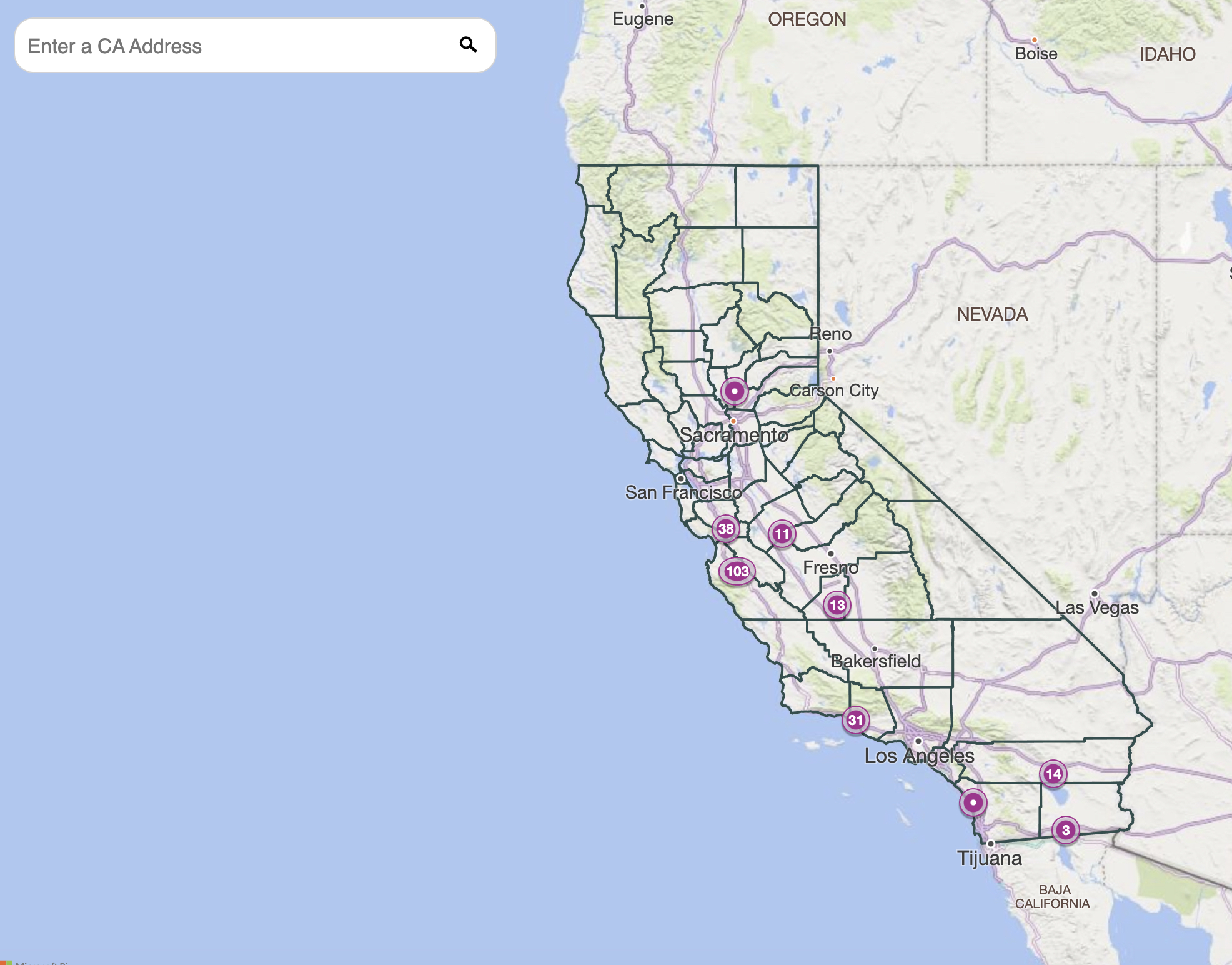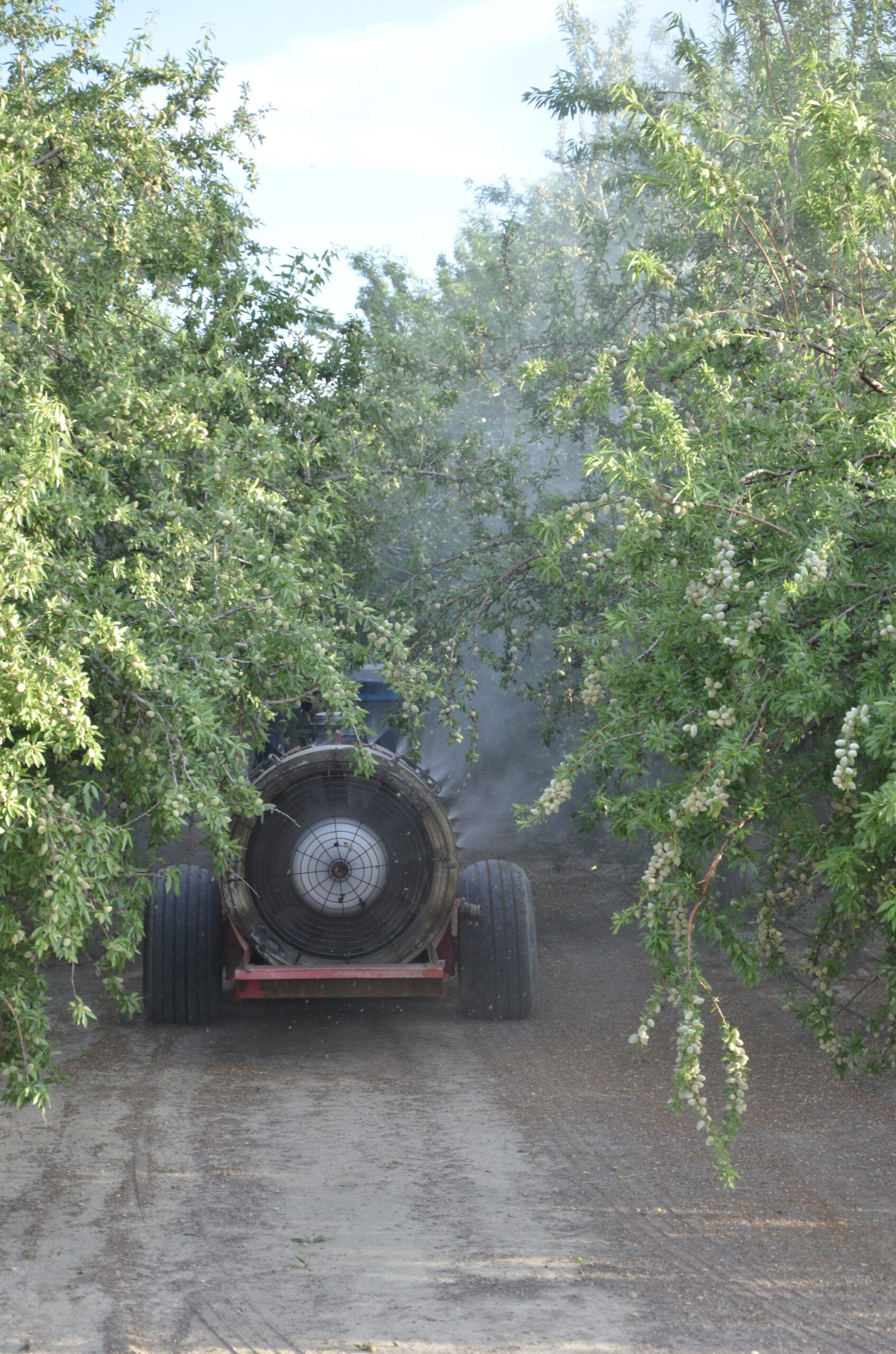Growing Together Summer 2025
Understanding Spray Days California
Insights from CACASA and Sonoma County Ag Commissioner
A first-of-its-kind statewide notification system for restricted material pesticide applications on farms was launched by the California Department of Pesticide Regulation (DPR) in March 2025.
SprayDays California – developed over the past four years with substantial input from the public – provides a website with transparent, accessible and timely information about the use of restricted material pesticides. These pesticides are subject to the state’s strictest regulations, including requirements on where they can be used, who can use them and how they can be used.
The California Agricultural Commissioners and Sealers Association (CACASA), which is comprised of the state’s 58 county ag commissioners (CAC), reacted positively in support of SprayDays and the website. “We are hopeful the public will find this a useful tool for its intended purpose, which is to provide transparent information when it comes to the application of pesticides in California that are necessary for managing pests and ensuring a stable food supply,” said CACASA Executive Director Lindsey Carter.
REGULATORY REQUIREMENTS FOR GROWERS AND APPLICATORS
The regulations require the electronic submission of all notices of intent (NOIs) for the use of restricted material pesticides in production agriculture to CACs through CalAgPermits, or third-party tools currently used to submit NOIs to CalAgPermits. If a grower or applicator cannot submit an NOI electronically due to undue hardship (e.g., internet outage, limited access to electricity or a declared emergency), the CAC may authorize alternative submission formats, including allowing paper submission of NOIs. In such cases, the CAC will upload select NOI data into CalAgPermits.org on behalf of the grower or applicator.

Q&A with CACASA Executive Director Lindsey Carter and Sonoma County Ag Commissioner Andrew Smith
Did CACASA or CACs provide input for the development of SprayDays?
CARTER: CACASA worked with DPR to host four pesticide notification pilot programs in Santa Cruz, Stanislaus, Riverside and Ventura counties in the early development of the SprayDays system. We also worked with Tulare County in a beta testing of the SprayDays system prior to launch. We provided input and technical feedback to DPR as they developed the system, but we did not actively participate in all aspects of development. We also provided written comments to the regulatory rulemaking as well.

SMITH: There was a lot of discussion around how to identify a field that would be treated. Eventually, DPR decided to use the meridian, township and range. CACs were concerned that listing a specific address, acreage or field could lead to conflict surrounding an application.
How have CACs spread the word about the system within counties?
CARTER: Counties have provided flyers and information about SprayDays at community events, on county websites and social media and at stakeholder events.
SMITH: CACs have also presented on the system at workshops and annual trainings.
Will this change how growers and applicators currently submit NOIs to CACs?
CARTER: Per the website, the only change is that NOIs must be submitted electronically to the CAC through CalAgPermits except in cases of undue hardship. Growers who already use CalAgPermits to submit NOIs, or third-party tools currently used to submit NOIs to CalAgPermits, will experience no change to their process. In cases of undue hardship, CACs are working with those growers one-on-one to ensure they are in compliance with the regulation.
SMITH: This has also required proactive communication with growers and restricted material permittees on NOI submission, and in some cases requires adjustment of restricted materials permits and site commodities to ensure that only production agriculture NOIs are subject to the notifications.
Can you address the importance of timely and accurate NOI submissions to avoid compliance issues?
CARTER: Having timely and accurate NOIs helps speed up the process of NOI review and approvals by the county staff. Regardless of SprayDays, having accurate and timely NOIs is the best business practice to ensure that you are in compliance and that county staff have ample time to address any issues without impacting growing operations. This helps the grower as much as the county staff.
SMITH: County staff must review the environmental conditions of the area to determine the safety of the application and to mitigate adverse impacts to surrounding properties and crop commodities before approving an NOI. It is imperative that every permittee evaluate alternatives to the restricted material chemistry they intend to use to determine that the specific product chosen is most appropriate.
Do you anticipate an increase in public inquiries/concerns/objections that may hinder pesticide applications?
CARTER: We did anticipate this and stressed this concern in every public forum and comment period. However, thus far we have not seen or heard of applications being hindered or stopped by public inquiries. We have had increased questions and inquiries into the county office, but nothing disruptive that has been reported.
What are some strategies for effective communication between growers and CACs?
CARTER: When in doubt, ask your CAC or county staff member if you have a question about your application, NOI or any pesticide-related topic. Assuming or interpreting incorrectly can lead to hefty enforcement actions that don’t need to occur. Consistent communications improve your ability to remain in compliance with all laws and regulations.
SMITH: CACs and their staff also want to support understanding and be viewed as a resource to help people understand regulations and maintain compliance.
Anything else you’d like to share about SprayDays?
CARTER: SprayDays is another tool in the toolbox for the public to use. It is not all inclusive of every application and should simply be used by the public as an awareness tool of certain ag activities in their area. Not all applications will be referenced in SprayDays and not all NOIs listed in SprayDays will actually occur. With weather, farm needs and many other factors, applications may change in their size, scope and type. If any grower experiences a negative impact due to SprayDays increased public activity, please let your CAC know. If you see errors or technical glitches in SprayDays, share that as well.
SMITH: Also remember that all pesticide use reporting is subject to public records act requests and nearly all CACs respond regularly to public requests for information about pesticide use around them.

SPRAYDAYS WEBSITE FEATURES
- A web-based pesticide map.
- Option to sign up for email or text message notifications sent 48hours prior to the intended use of soil fumigants and 24 hoursprior to the intended use of other restricted material pesticides.People can register with multiple valid addresses (home, work,school, etc.).
- Pesticide safety information, including reminders to stay awayfrom application sites (fields) and follow any posted warningsigns when pesticides are in use.
- Notices that applications may begin within a four-day window ormay not occur at all.
- Information on applications will be available for four daysfollowing the scheduled date and time of the planned application.
- The intended date and time of the pesticide application.
- The location of applications within one-square-mile sections,which aligns with the location information that is submitted bygrowers or applicators prior to the use of a California restrictedmaterial pesticide.
- Information on the restricted material pesticides included in thesystem.
- Context on how pesticides are regulated in California.
- Application details such as pesticide product name, activeingredient, application method, number of treated acres and U.S.EPA registration number.



